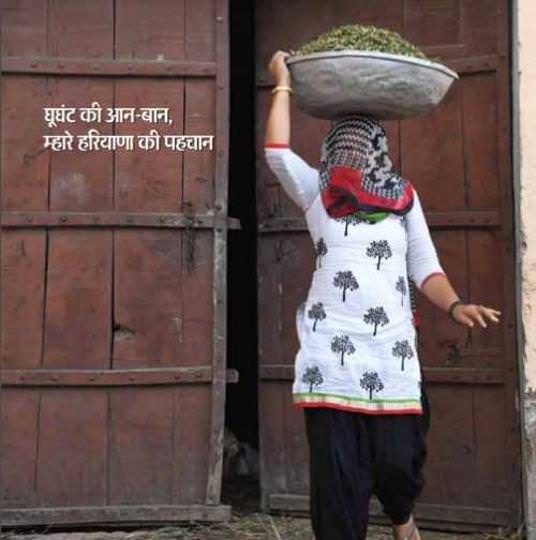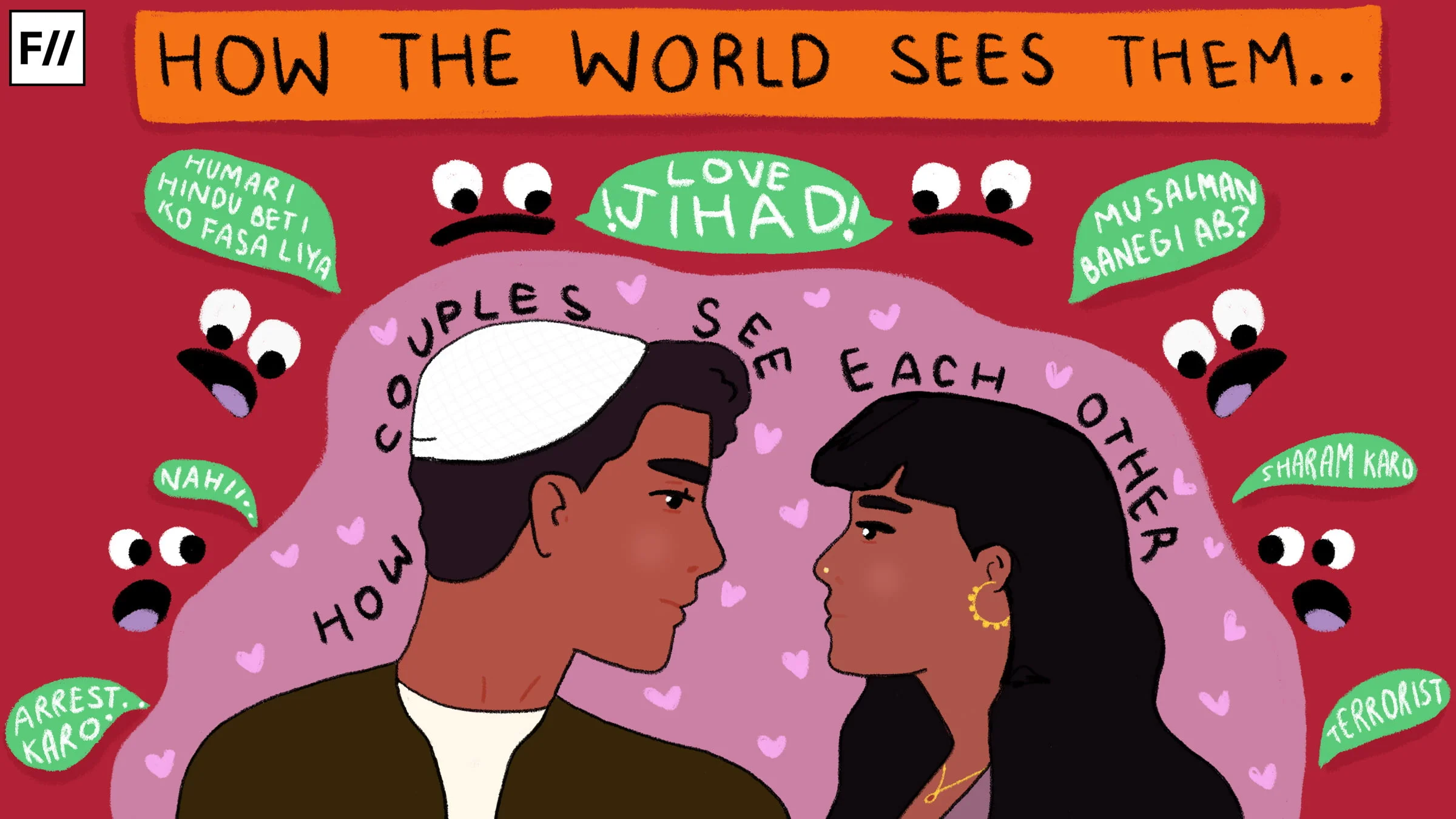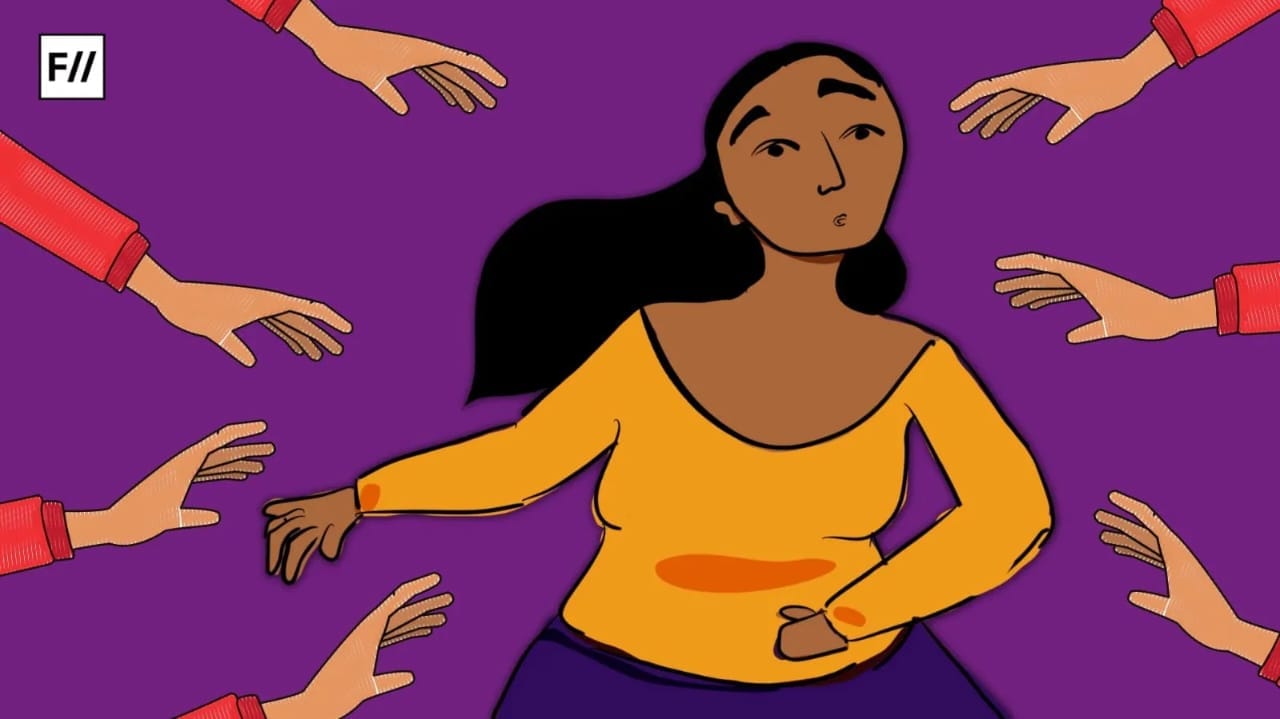An issue of Krishi Samvad, a supplement of the state government run magazine Haryana Samvad, put a photograph of a woman, her face invisible behind a ghoonghat (veil), and declared it as Haryana’s identity, with dangerous conviction. The message is deeply gendered, however, hardly unique. Women’s bodies being employed for the purposes of constructing meanings and definitions, as well as for sending crucial messages, have had a long precedent.
“Modesty” and “purity” of women hold critical importance in defining the “honour” of a family, community or nation along with other significations. The premium on propriety is particularly high because it demonstrates the strength and intensity of masculine control over women. The woman is defined by particular patriarchal formations like the family or the state and her selfhood is thought to be insecure or irrelevant outside of it.
A woman always “belongs” to something, like the nation or the state, and/or someone, like the male patriarch of the family, and her agency is limited by the cosmetic projection of that particular something or someone that she is given to represent. Hence, an assault on the woman, particularly of a sexual kind, is a vicious attack on the virile masculinity which she had to be “protected” by and that she helps define through her “chastity”. The woman here is means to an end, an object in the service of patriarchy.
Women’s bodies being employed for the purposes of constructing meanings and definitions, as well as for sending crucial messages, have had a long precedent.
Patriarchal control operates in dangerous ways. Ostensibly benevolent patriarchy obliges the woman to submit to the stifling darkness of the veil so that the family or the community can pride itself on how well it can “tame” its women into servility. Aggressive masculinity thrives on asserting its dominance over women because that is how this kind of masculinity, always diffident and ever so fragile, reassures itself of its verve and vigour.
Patriarchy also makes women responsible for sheltering the community’s “honour”, cultural heritage and masculine pride. Patriarchal operations are replete with ironies. The “weak” feminine bears the onus of strengthening the mettle of manhood. Another irony is that patriarchy often comes undone by its own virtues and regulations.
Patriarchy makes women responsible for sheltering the community’s “honour”, cultural heritage and masculine pride.
When women are sexually “violated”, there are many who are made to think of themselves as victims of violence than the women who die or survive it. Elisabeth Wood writes that during World War II, when the Soviet army occupied Berlin, thousands of women and girls were raped, often before their family members and neighbours. Megan Gerecke found out through her research that in Sierra Leone, family members were often forced to clap or laugh while their relatives were brutally raped and other forms of sexual violence were perpetrated on them. Urvashi Bhutalia notes that during the partition, apart from being raped, women were made to parade unclad in the streets, their breasts were mutilated, their bodies marked with symbols of the “other” religion.
All these were efforts at sullying not only the woman’s “purity” but also that of her nation, community or family. During the partition women were also forced into sexual slavery where they were raped by men of the other religion and were impregnated as an assertion of that violation. Purity of a woman is the prized possession of the state and when it is threatened, patriarchy is attacked by none but itself.
Also read: The Partition Of Punjab: A Tale Of Violation Of Women’s Rights
When patriarchy is violated, the woman is often shamed for it. Bina D’Costa writes that one woman who was raped during the Bangladeshi Liberation War in 1972 was barred from fetching water from the local tubewell once her community figured out that she was labeled a Birangona, or war heroine, a term designated by the Bangladeshi government to recognize the violence suffered by raped women during the Liberation War. The survivor of violence becomes proof of a violated masculinity and hence dissociation from the survivor becomes a necessary means of survival and rebuilding of toxic masculinity. It is a means through which patriarchy protects itself.
When the woman is covered from head to toe and does not assert her sexual agency or cannot be sexualized or sexually violated by the “Other”, she is a living example of the strong grip of control her state, community and family exercise over her body and life. A.P. Singh, alleged rapist Mukesh Singh’s lawyer, said in the India’s Daughter documentary that he would burn his sister or daughter to death if they dared to go out in the evening with a man, like Jyoti Singh had, the night she was gang raped and killed on a moving bus.
Singh attempted to prove his masculinity by denigrating the lack of control Jyoti Singh’s family had exercised on her life and choices. The cruel insinuation was that the violence that was visited on Jyoti Singh was because of the lack of forceful masculine power and authority over her life. A.P Singh projected himself as infinitely more capable of protecting “his women” than Jyoti’s father and brother had been. He attempted to secure his identity as a “real man” by these sordid assertions, and insinuations, about his manhood and the weakness of the male members of Jyoti’s family.
When a woman is sexually assaulted, or when she chooses to assert her sexual agency, the patriarchal control over her body is lost by whom she is supposed to represent. She is guiltier if she is complicit in the loss of patriarchal control over her desires and is castigated as a “fallen woman”. However, the patriarchal formation she represents shares the guilt of not being able to “protect” or “control” her and hence runs the risk of losing its power. The maniacal bid to protect woman hence comes from a masculine anxiety about its own inadequacies and patriarchal failings.
The maniacal bid to protect woman comes from a masculine anxiety about its own inadequacies and patriarchal failings.
The woman’s ghoonghat makes her as blind, deaf and mute as she is made to be under the burden of violent traditions. She is not seen, not heard and not allowed the voice to assert her agency. This complete subjugation of the woman is a definitive victory for masculinity which establishes its dominance through repeated subjugation of the weak feminine.
Since power is equated with violent and aggressive masculinity, the state is identified with masculine power that successfully protects the motherland, the subjugated feminine. Haryana’s identity, and its self-image, as a powerful, virile state is secured through how well it can invisbilize women and curtail their sexual agency making careful use of the trope of protection. Women become vehicles through which the identity of the state can be secured and sustained as powerful, and often, valiant. The picture of the veiled woman along with the caption hence conveys a pretty unambiguous message.
Also read: ‘Make Men Wear Veils And They Will Understand Our Difficulties’
About the author(s)
Sohini Chatterjee holds an MA in International Relations from South Asian University, New Delhi. She researches and writes on gender, culture and politics. Her writing has appeared in Kindle Magazine, Cafe Dissensus Everyday, Huffington Post India, Coldnoon: Travel Poetics, The Lookout Journal etc.





When a muslim womans wears a hijab it’s not oppression but when a hindu wears a ghoonghat it’s opression wow nice…
@Sandy Neither wearing a hijab nor wearing a ghoonghat is an oppression if it is an expression by choice. It is the practice through which the patriarchs in our society impose such baseless traditions on the other gender to proclaim their masculinity which we term as oppression.
Why you don’t change your religion to Christian/Muslim if think there are baseless traditions in hindu religion??
You are nobody to ask anybody to change their religion.